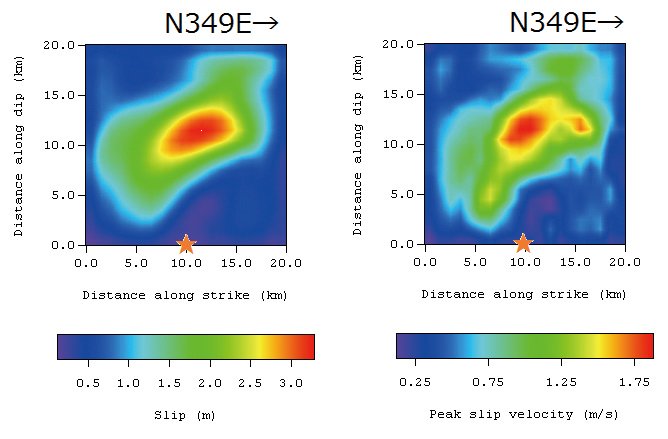Major Research 1A Research on Mitigation of and Restoration from Earthquake Disasters
Background and Objectives
In the event of large-scale disasters including Nankai megathrust earthquakes and earthquakes in the greater Tokyo area, it is required to secure necessary trunk line cargo transportation soon after an earthquake and to quickly secure the requisite minimum transportation of key emergency supplies for recovery and reconstruction. In addition, the interaction of earthquakes, tsunamis, and high waves with the ground might cause coastal disasters, so it is necessary to reduce such risks.
Therefore, the themes of this research cover research and development which simultaneously achieves the two goals of improving earthquake resistance and reducing construction costs. These two goals can be achieved through diagnosis and performance verification of earthquake-resistance of facilities which address the properties of long-period and long-duration earthquake ground motion, which is expected to occur during a subduction-zone megathrust earthquake, as well as the properties of earthquake ground motion caused by local ground characteristics. Research and development are being conducted mainly on methods for investigating and diagnosing earthquake resistance as well as construction methods that improve the resistance of existing facilities with limited design life that were erected during the era of rapid economic growth without disturbing their use.
Research topics
Research and development comprises the following three subthemes:
- Research on strong ground motions and damage predictions in the case of the greatest earthquakes
Subduction-zone megathrust earthquakes may cause the greatest and long-duration earthquake motions, so we will develop techniques for predicting such motions. Also, we will develop techniques for predicting liquefaction and structural damage caused by such motions.
- Research on damage-reduction techniques against the greatest earthquakes
We will suggest the most effective countermeasures under given limitations to effectively promote seismic strengthening of existing structures. In doing so, we will actively utilize damage reduction and strengthening techniques that use novel materials, structures, and construction methods. Especially, as measures for improving earthquake resistance of industrial complexes, we will consider maintaining the functions while reducing costs for overall plants, and then develop investigation, diagnosis and countermeasure techniques which minimize usage limitations of plants. In addition, we will develop methods to rapidly evaluate damage levels on site immediately after a disaster as well as emergency restoration techniques.
- Research on the interaction of earthquakes, tsunamis, and high waves with ground dynamics
We will proceed with research on the following interaction problems of earthquakes and ocean waves with the ground: stability evaluation against seabed liquefaction, washout, cavity formation and collapse under earthquakes or under ocean waves; a mechanism in which a breakwater foundation loses its bearing capacity in the presence of tsunami; and other interaction problems. Also, we will use numerical simulation models, model experiments (on a centrifuge and a large-scale fluid tank), and other methods to investigate earthquake-induced submarine landslides, the resulting tsunamis, ground dynamics including deformation and failure under the influence of tsunami and high waves, as well as their countermeasures.
Activities in FY 2018
We obtained 2,378 strong motion earthquake records during the period between January to December 2018. Of these data, the strong motion earthquake record with the maximum amplitude was measured at the Port of Tomakomai, which resulted from the Hokkaido Eastern Iburi earthquake that occurred on September 6, the maximum acceleration of which was 349 Gal. For strong motion earthquake observation at ports and harbors, we have been gradually implementing a system that automatically sends an email containing quickly estimated values of detected earthquake motions after their record is obtained. Although the earthquake that struck the Port of Tomakomai occurred in the middle of the night, a preliminary estimate of the earthquake data was quickly sent out about 10 minutes after the earthquake struck.
As for the Hokkaido Eastern Iburi earthquake that occurred on September 6, 2018, PARI was requested by the Hokkaido Regional Development Bureau to cooperate, so we dispatched a joint investigation team together with the National Institute for Land and Infrastructure Management (NILIM) to the Port of Tomakomai on September 7 and 8 and conducted a study on the status of soil liquefaction, etc.
After the Hokkaido Eastern Iburi earthquake on September 6, we estimated the rupture process of the earthquake, and estimated the earthquake motions that might have occurred at ports and harbors where no strong ground motion record could be obtained, etc.
We evaluated and analyzed the liquefaction behavior of grounds that had fine content or grounds subject to successive earthquake motions, and obtained new knowledge that will be useful for suppressing the amount of internal ground flow and boiling that occur with the propagation of liquefied zones.
We examined the residual performance of piled piers concerning their overall stability following their structural damage caused by earthquakes, and proposed a model for quantitatively evaluating the effects of the plate thickness and yield strength of steel pipes, etc., and organized information concerning evaluation of the seismic performance of existing piled piers.
We examined the shake table test results obtained by using the largescale earthquake simulator 'E-Defense' at the National Research Institute for Earth Science and Disaster Resilience (NIED) for 1/8-scale models of actual petroleum tanks, piled piers, and seawalls at a petrochemical complex in Keihin Port. We compared the behavior of two different cross sections with and without earthquake-resistance measures.
We conducted stability evaluation and analyses concerning washout, cavity formation, etc. that occur under various dynamic external forces such as earthquakes, waves, and water flow to elucidate their characteristics and mechanisms, and also suggested new countermeasure techniques that can effectively suppress washout and cavity formation.
We conducted centrifugal model experiments to study the ground stability against waves and found that ground stress and pore water pressure affect ground stability.

Estimated distribution of slip and slip velocity on the fault surface during the Hokkaido Eastern Iburi earthquake



